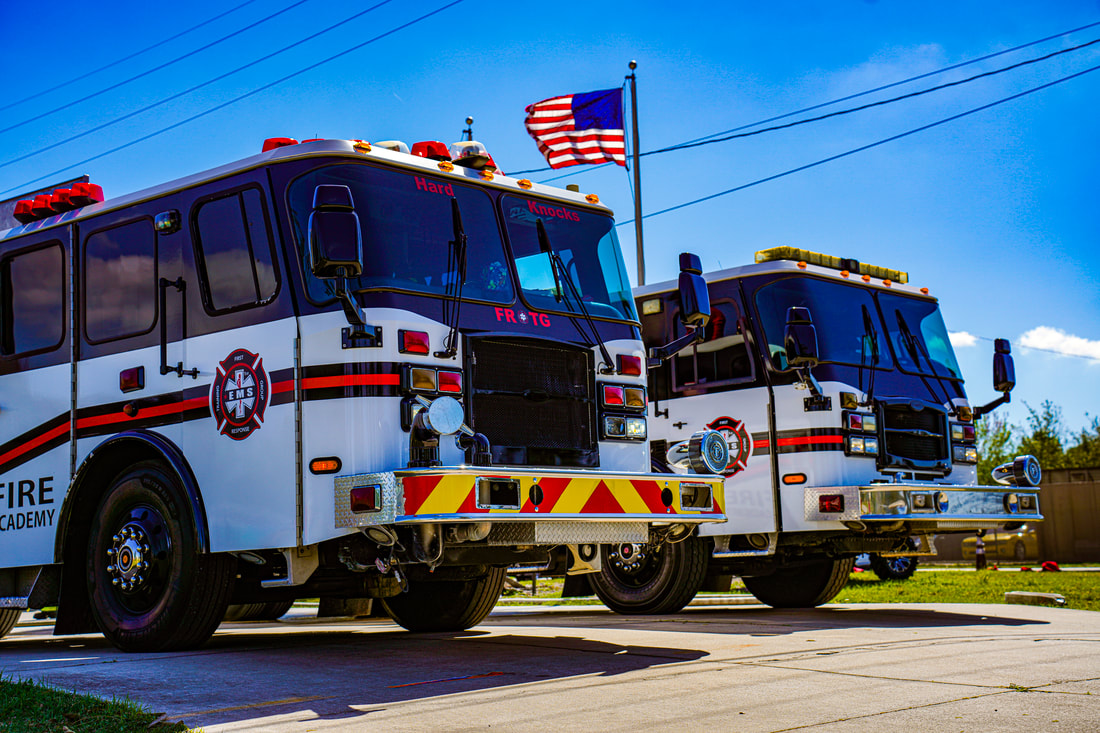|
Firefighter I OVERVIEW
The standard of firefighter training as required by Florida State Statute 633 and Florida Administrative Codes 69A-37 and 69A-62 to be a Volunteer Firefighter is the completion of Part I of the State of Florida Minimum Standards Course. A significant portion of this training can now be completed through a blended learning approach that combines both “on-line” and practical skill components. The on-line portion can be taken in lieu of the traditional classroom lecture and satisfies most of the required academic objectives. Validation of this training is met by retaining copies of quiz scores and final evaluation upon completion of the on-line program. The following academic components make up the Part I Minimum Standards curriculum and are available on-line: · Firefighter I Curriculum · National Incident Management System (NIMS); ICS100 & IS700 · Wildland Firefighter Training– S130 & S190 · EMS First Responder / EMR The Firefighter I curriculum includes practical skill development. Completion of the practical skills is demonstrated by completion of a Firefighter I Practical Skill Task Book. Skill achievement is validated by both a primary and secondary instructor’s approval once the student meets the objectives. In addition to completion of the required practical skills, all students are required to participate in live fire training scenarios coordinated by a certified Live Fire Training Instructor. Students who meet all combined objectives receive a Certificate of Completion – Volunteer Firefighter 206 Hours. Volunteer Firefighters who have successfully completed the Firefighter Part I curriculum standard are able to operate in the “exclusionary or hot zone” and in an Immediately Dangerous to Life or Health (IDLH) environment. Other volunteers who do not meet this level of training may support the overall operation as long as they are always in a safe zone and are only performing duties they have been “trained commensurate to duty”. NOTE: Firefighter I – 191 hours may also operate in the IDLH. “Trained commensurate to duty” means that the person must have documented training in the specific task assigned or a combination of skills required to accomplish any series of tasks which may be assigned to that individual, given a set of conditions or circumstances that the individual may undertake. Anticipated special circumstances such as hazardous materials operations, technical rescue, and similar conditions or circumstances require additional training. The National Incident Management System (NIMS) ICS 100 curriculum introduces the incident command system (ICS) and provides the foundation for higher level ICS training. Its focus is on the history, features, and principles, along with the organizational structure of Incident Command. The NIMS IS 700 curriculum introduces NIMS and provides a consistent nationwide template to enable all agencies to work together during incidents. The Wildland Firefighter S130 curriculum addresses the basic skills required of all wildland firefighters and includes a field exercise. The Wildland Firefighter curriculum S190 is an introduction to wildland fire behavior including factors that affect the spread of wildfire and recognition of potentially hazardous situations. The Emergency Medical Responder (EMR) First Responder curriculum is an introduction to basic life support emergency care. Firefighter II OVERVIEW This course is a minimum of 301 hours of classroom and practical applications. The course will meet the JPR's of NFPA 1001 Standard for Fire Fighter Professional Qualifications. The course will present information on fire department communications, building construction hazards and structural collapse, maintenance of electric generators and lighting equipment, service testing fire hose, firefighting foam, coordinating fireground operations, advanced origin and cause, fire protection systems, conducting private dwelling fire safety surveys, Florida Statewide Emergency Response Plan (SERP), air monitoring, new challenges for firefighters, and firefighter safety and survival. |
|


